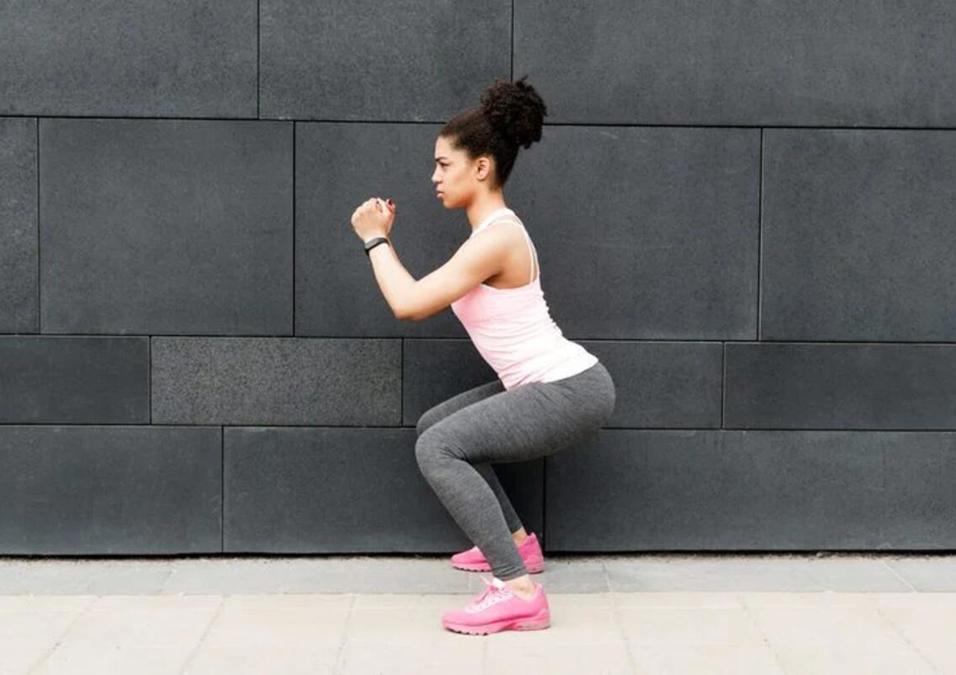30-Minute Weight Loss Exercise

SIGN UP FOR YOUR FREE DAY PASS TODAY!
At my previous gym, there was a man who spent about an hour working out almost every morning.
Each day, he used the same 10kg dumbbells, performing the same set of exercises in the same way before heading out.
While his routine did elevate his heart rate, burn calories, and initially build strength in the muscles he was using, there was a noticeable lack of progress.
That said, he did develop discipline and an admirable exercise habit that would benefit his health in the long run.
The issue was that, without progression, the time he was dedicating to his routine far exceeded the benefits he was gaining.
It’s worth saying that you don’t need a gym membership to lose weight or stay fit. Home workouts, even with minimal equipment, can significantly improve your fitness level, strength, and body composition.
However, repeating the same workout every single day can stall your progress and won’t deliver the results you’re working hard to achieve.
Here’s the good news: this problem is both simple and affordable to fix. According to Amanda Capritto, a certified personal trainer and expert in minimal equipment training, you don’t need expensive gear to keep your fitness routine effective. And she’s a prime example of making this work.
“I’ve been traveling across the U.S. in a converted van for the past year,” Capritto explains. “During this time, I’ve only visited full gyms a handful of times.
Most of my training has been done with just resistance bands, a single 15kg dumbbell, and a 16kg kettlebell.”
Despite this, she’s achieved measurable gains in strength and fitness, even setting a new squat personal best during one of her rare full-gym visits.
“With some creativity and commitment, it’s absolutely possible to stay strong with minimal equipment,” she says.
A lack of challenge and progression is perhaps the most common mistake I see when it comes to working out.
Drawing from over a decade of experience as a fitness writer, I can confidently say it’s an issue that hinders progress for many.
The key to avoiding this pitfall is called “progressive overload.” By systematically increasing the intensity of your workouts to match your improving fitness level, you ensure that your sessions remain appropriately challenging. This approach drives positive adaptations in the body.
If you’re working with limited equipment, progressive overload can also allow you to make the most of what you have.
Capritto, for example, manages this by being careful about exercise selection and modifying variables like repetition counts and rest periods.
Her workouts typically include straightforward yet effective moves like rows, push-ups, deadlifts, lunges, squats, and kettlebell swings.
With her approach, she can finish her sessions in 30 minutes, freeing up time for what she loves, like exploring the mountains.
“Strength training used to be my main activity and goal,” she says. “Now I see it as a tool to enhance health and physical capability.
It’s a means to an end. I think many people feel the same way.”
Capritto limits herself to two to four efficient sessions per week. Here’s how she effectively applies progressive overload:
1. Adjust the Weight
One of the simplest ways to achieve progressive overload is to increase the weight of the equipment you use.
A quick way to test whether an exercise is challenging enough is to observe your speed and effort level during the last couple of repetitions. If they feel too easy, it may be time to use heavier weights.
For example, if you’ve been doing four sets of 10 goblet squats with a 10kg dumbbell and it starts feeling easy after a week or two, switch to a heavier 12kg weight.
This approach is straightforward in a gym setting, but for those limited to a small selection of equipment at home (or, in Capritto’s case, in a van), alternative strategies are necessary.
2. Increase Sets and Reps
If your available weights are fixed, another way to increase intensity is by adding more sets or reps.
For instance, if you’ve been doing four sets of 10 reps, try five sets of 10 or four sets of 12.
However, keep in mind that endlessly adding reps may lead to diminishing returns. Research shows that lower rep ranges paired with heavier loads are more effective for building strength.
3. Modify Your Exercise Selection
When you can’t increase weights, you can introduce unilateral (single-sided) exercises to increase the challenge with the same equipment.
For example, swap standard squats with split squats or replace regular rows with single-arm rows.
You can also choose more advanced variations, like elevating your feet during push-ups or trying sissy squats for added difficulty.
4. Manipulate Time Under Tension
Time under tension refers to how long your muscles are actively working during an exercise. By slowing down the tempo of your workouts, you can make them more challenging.
For instance, Capritto suggests slowing down the eccentric (lowering) phase of movements. For squats, take three seconds to lower yourself to the bottom position, pause for three seconds, and then rise quickly.
5. Shorten Rest Periods
Reducing rest time between sets can increase workout intensity, particularly for improving muscular endurance.
However, if your primary goal is building strength, this might not be the best method as longer rest periods help your muscles recover and perform at maximum capacity during subsequent sets.
6. Add Power Training
While not strictly progressive overload, incorporating power training can offer additional benefits.
Focusing on the concentric (upward) phase of lifts, or incorporating plyometric exercises like squat jumps or clapping push-ups, can build power for more explosive strength moves.
Why Progressive Overload Matters
Progressive overload is essential for avoiding two key pitfalls: plateaus and insufficient challenge. Fitness adaptations are guided by two principles:
- General Adaptation Syndrome (GAS) explains that your body responds to stress by positively adapting to it—as long as the stress is appropriate.
- Specific Adaptations to Imposed Demand (SAID) posits that your body improves at the specific tasks you practice. For strength, this means you need to progressively increase your weights to keep improving.
Without progression, workouts stop being effective. Whether your goal is increased muscle strength, better endurance, or improved performance, consistent progression is the backbone of your results.
By incorporating these tips, you can break through plateaus and make real, measurable progress in your strength training, even with limited equipment.
Source: independent
The opinions shared in the GymNation blog articles are solely those of the respective authors and may not represent the perspectives of GymNation or any member of the GymNation team.
GET YOUR FREE TRIAL TODAY

















































































